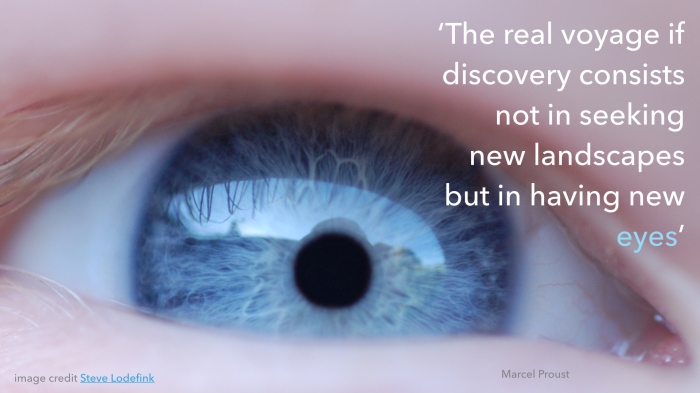“Abstract expressionism is a post–World War II art movement in American painting, developed in New York in the 1940s. It was the first specifically American movement to achieve international influence and put New York City at the center of the western art world, a role formerly filled by Paris….”

As my time spend working on our home becomes more manageable, I find myself once again turning to the joy of art. For years I’ve wanted to practice art again. In a way, I always have, from works of architecture, to writing, art can be many things. However, the real practice of art for me, is to be unencumbered by needs, wants, or even desires. It just needs to happen. And to make it happen artistically in a way I like, it needs to ‘feedback upon oneself’ – where the artist enters into a conversation if you like, with the work being undertaken.
This post is really a way for me to get to grips with some ideas as I start to experiment. In particular, I like the idea of letting the medium nurture the nature of the work, and in this respect I have been drawn to understanding some of the basic fundamentals behind:
Abstract Expressionism is an overtly expressive form of free painting style, as developed by American painters Jackson Pollock who ‘dismantled and redefined modernist painting’, Mark Rothko and Willem de Kooning in the 1940s and 1950s.
On the recent contemporary scene – the featured image is a work by Gerhard Richter, taken at the Tate Modern last year. Richter shows how paint can be used to develop texture, using a technique he developed and made his own. Each artist has their own ‘discovered method’ to painting, using the action of painting to create the wok of art through manifesting a certain aspect of the medium itself. This kind of painting is made by the group who are called action painters. My own approach to abstract expressionism is in keeping with the recognised field of:
Action Painting
To get an understanding of abstract expressionism also requires understanding the different types of painting from which it is derived, in particular ‘action painting’. The term was coined by Harold Rosenberg in his (groundbreaking) article The American Action Painters published in ARTnews in December 1952. Action painters worked in the post war period until the 1960’s, using paint with splashing, gestural brushstrokes and dripping paint onto canvas rather than carefully applying it. See Arshile Gorky, Franz Kline, Willem de Kooning, and Jackson Pollock.
Artists who practice action painting can ‘nurse the canvas’ as Richter does, or they can attack it with expressive brush strokes or mark-making, making real the ‘expression of paint dynamics’, what the Tate Modern calls ‘the impression of spontaneity’.
***
On the featured image: ‘In The Studio’ series
The featured image is chosen for an invisible reason – Richter was inspired by the experimental composer John Cage. Since the early 80’s, he undertook a series of abstract works allowing earlier moments in the paintings creation to be revealed, the finished work composed of layers of painting in time. Richter listened to the music of Cage as painted each work in the series. Links between the work and the music are loose, letting the inspiration of Cage’s approach to ambient and silent sound move the artist onwards.



 Wiki tells us that following World War II, Alcoa created an internal ‘Imagineering’ program to encourage innovative usage of aluminum in order to keep up demand. Other notable pre-Disney usages include an October 24, 1942 mention in the New York Times in an article titled ‘Christian Imagineering’, a 1944 Oxford English Dictionary entry which cites an advertisement from the Wall Street Journal, and the use by artist Arthur C Radebaugh to describe his work, which was mentioned in the article ‘Black Light Magic’ in the Portsmouth Times, Portsmouth, Ohio, 1947:
Wiki tells us that following World War II, Alcoa created an internal ‘Imagineering’ program to encourage innovative usage of aluminum in order to keep up demand. Other notable pre-Disney usages include an October 24, 1942 mention in the New York Times in an article titled ‘Christian Imagineering’, a 1944 Oxford English Dictionary entry which cites an advertisement from the Wall Street Journal, and the use by artist Arthur C Radebaugh to describe his work, which was mentioned in the article ‘Black Light Magic’ in the Portsmouth Times, Portsmouth, Ohio, 1947:


